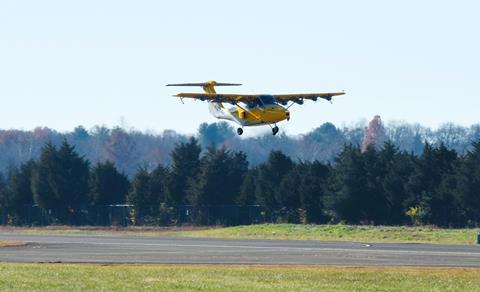The US Army is exploring potential use of Electra’s hybrid-electric short take-off and landing aircraft (eSTOL) aircraft for logistics in contested environments.
The Virginia-based aircraft developer disclosed on 17 April that it had secured a $1.9 million Small Business Innovation Research contract for windtunnel testing to be conducted with the service.
The proposed aircraft’s blown-lift design allows it to achieve lift at low speeds, making it possible to take-off from “spaces as small as a soccer field”, Electra says. Its range of greater than 870nm (1,610km) on hybrid-electric propulsion will enable a range of missions “without the need for battery charging stations”.
The US military defines logistics in contested environments as combat situations in which logistics operations are being targeted by adversaries.

Electra believes its in-development aircraft, with a targeted payload of 1,130kg (2,500lb), is the right type for the mission.
“Many of the most commonly deployed military logistics solutions in use today are flown well below their intended payload capacity,” says Ben Marchionna, Electra’s director of technology and innovation. “Our eSTOL aircraft can fulfil these missions while using dramatically less fuel, providing much more range, operating at significantly reduced noise levels and utilising the same constrained operational ground footprints.”
The windtunnel testing will be conducted with a “powered model of the pre-production prototype aircraft that is scaled appropriately to validate the full- scale blown-lift eSTOL physics”, Electra tells FlightGlobal.
The programme will help guide development of Electra’s eventual production aircraft, along with data gathered from the start-up’s ongoing flight-test programme using its EL-2 Goldfinch demonstrator.
Unveiled during the Paris air show in June last year, the two-seat Goldfinch “is the world’s first blown-lift aircraft using distributed electric propulsion and a hybrid-electric propulsion system”, Electra said at the time. “The aircraft uses eight electric motors to significantly increase wing lift and enable ultra-short take-offs and landings.”
Electra plans to develop its full-scale production prototype with $85 million of funding through the US Air Force’s AFWERX Agility Prime programme. It is pushing for certification of its eSTOL aircraft toward the end of the decade.































